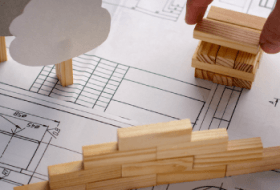Nutrient Management in Planning and Development
In this section
- Planning and Development in Nutrient Sensitive Catchments
- Nutrient Management Boards
- All Wales Calculator
- NRW Requirements for Ammonia Emissions and Discharges
NRW Requirements for Ammonia Emissions and Discharges
How New NRW Guidance on Ammonia Assessments Affects Planning Applications
In February 2024, Natural Resources Wales (NRW) published updated guidance on ammonia emissions to air from developments requiring planning permission or an environmental permit. The guidance also relates indirectly to ammonia discharges to water in sensitive catchments, such as SAC rivers, where ammonia is contributing to ecological failures.
Ammonia is a highly reactive gas, and over 90% of UK emissions come from agriculture. It can travel long distances, contributing to air pollution, habitat damage, and human health impacts far from the source. In water, ammonia from sources such as Wastewater Treatment Works (WwTWs) can cause ecological harm, particularly in nutrient-sensitive rivers.
Ammonia Emissions to Air (Air Quality Impacts)
The NRW guidance outlines which developments may emit ammonia to air and therefore require an assessment. These include:
- Agricultural developments involving increased livestock, anaerobic digestion, or land spreading
- Commercial or industrial activities requiring a permit with an ammonia emission limit
If your development is expected to release ammonia, you must first complete a screening assessment using the SCAIL Agriculture tool. If the screening shows a process contribution exceeding 1% of the critical level or load at a designated site, a atmospheric dispersion modelling assessment will be required.
To assess background ammonia concentrations, you must consult the Air Pollution Information System (APIS). This provides location-specific data and critical thresholds for nearby SACs, SPAs, and SSSIs. A detailed modelling assessment is required if background levels are already close to or exceeding ecological thresholds.
For full technical requirements, refer to NRW’s ammonia and air quality assessment guidance (February 2024).
Ammonia Discharges to Water (Wastewater and Water Quality Impacts)
While NRW’s 2024 guidance relates directly to ammonia in air, ammonia in wastewater discharges is also a regulated pollutant under Water Framework Directive and Habitats Regulations.
In the Afonydd Cleddau SAC in Pembrokeshire, parts of the river catchment have shown persistent ammonia failures, as confirmed in NRW’s January 2024 compliance assessment.
Although nutrient neutrality is not currently required for ammonia, NRW is addressing this issue by tightening permit limits on Wastewater Treatment Works (WwTWs) in failing catchments. Where a WwTW has capacity and can continue to meet its ammonia discharge limit, developments connecting to that WwTW may still proceed in terms of ammonia related impacts.
Proposals That Reduce Ammonia Emissions
NRW’s guidance also supports developments that aim to reduce ammonia pollution. Examples include:
- Slurry store covers or low emission spreading equipment
- Improved manure management
- Reductions in livestock intensity
Applicants can include these measures in their ammonia assessment to help demonstrate reduced environmental risk and support their planning case.
Contact
If you have questions about any part of this guidance or would like to speak to the team, please contact:
- crichards@carmarthenshire.gov.uk – Nutrient Management Boards Support Officer
- lecarrington@carmarthenshire.gov.uk – Nutrient Management Officer, Strategic Policy and Placemaking
We are here to help you understand your responsibilities, access tools and support, and deliver sustainable development that protects our rivers.


